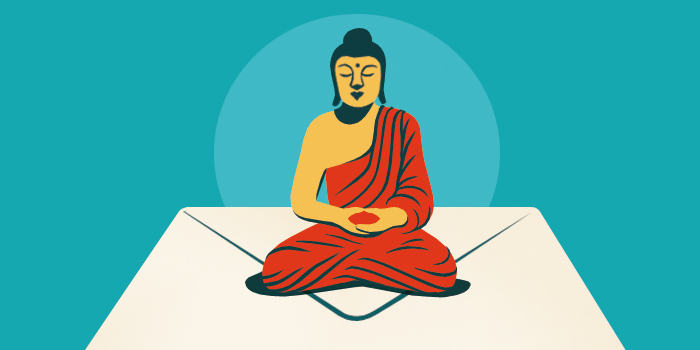Theravada in the West and Around the World
Until the 19th century, Theravada Buddhism was virtually unknown outside of the Asian countries where it was practiced, mainly in Southeast Asia. English and French missionaries, officials, and scholars encountered Theravada as their nations colonized Southeast Asia in the 1800s. European scholars developed an interest in Theravada through its texts, and in 1881 the English scholar Thomas William Rhys Davids founded the Pali Text Society to promote the study and translation of Pali texts, making the canon available in English for the first time. In Myanmar (Burma), British attacks on Buddhism and endeavors to convert the Burmese to Christianity sparked the Vipassana movement, an effort by monks and other leaders to revive and protect their religion.
Theravada attracted attention in the United States at the 1893 World’s Parliament of Religions held in Chicago, where a Sri Lankan lay Buddhist named Anagarika Dharmapala gave a talk on the benefits of Buddhism for Western societies. Around that same time, leaders of the new syncretic spiritual movement Theosophy encountered Theravada in Sri Lanka and began spreading modified versions of its teachings.
The 1960s and 1970s were watershed decades for the transplantation of Theravada to the West. Refugees from the war in Vietnam, Cambodia, and Laos began settling in the United States and Europe, building temples and creating Buddhist communities in their adopted countries. As Westerners started traveling to Theravada-majority countries and adopting the practices, the renowned Thai teacher Ven. Ajahn Chah established Wat Pah Nanachat, a forest monastery in Thailand for training Western monks. In the 1970s a group of Americans that included Jack Kornfield, Sharon Salzburg, and Joseph Goldstein returned from studying the Theravada practice of Vipassana (insight meditation) with renowned teachers Anagarika Munindra, S.N. Goenka, Dipa Ma, and Sayadaw U Pandita in India and Southeast Asia. Kornfield, Salzberg, and Goldstein founded the Insight Meditation Society in Massachusetts in 1975, sparking what would become the Insight Meditation movement in the West.
The spread of Theravada has accelerated since the 1980s. More and more lay Buddhist centers have taken root: Henepola Gunaratana, a Sri Lankan monk, founded the Bhavana Society in West Virginia; a group including Jack Kornfield established Spirit Rock in California; Amaravati, a monastery in the Thai Forest Tradition, was founded in England; and in the 1990s, Abhayagiri and the Metta Forest Monastery both opened in California.
The internet has had an enormous impact on making Theravada teachers and teachings available to interested laypeople around the world, and there are now several versions of the Pali canon available for free access.

Tricycle is more than a magazine
Gain access to the best in sprititual film, our growing collection of e-books, and monthly talks, plus our 25-year archive
Subscribe now